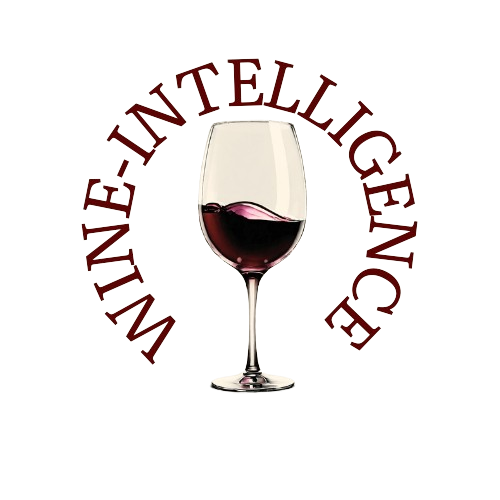The fine wine market, once considered a stable haven for alternative investment, continues to reel under sustained pressure in 2025.
For those who have allocated capital to wine through Liv-Ex — the world’s leading secondary market for fine wine — the outlook remains challenging, with losses deepening and momentum tilting further downward.
A Harsh Start to the Year for Wine Markets
According to data analyzed by WineNews, the first four months of 2025 have brought no relief to investors, with April proving especially damaging. All major indices on the Liv-Ex platform reported negative performance, compounding the losses already accumulated since the beginning of the year.
The Liv-Ex 100, which tracks the performance of the 100 most traded fine wines globally, posted a -3.6% decline in Q1, culminating in a -10.3% drop over the past 12 months. This index is often seen as the bellwether of market sentiment, and its current trajectory reflects widespread investor pessimism. Among the Italian wines included in the index are some of the most coveted labels: Bartolo Mascarello Barolo 2019, Bruno Giacosa Barolo Falletto Vigna Le Rocche Riserva 2017, and Giacomo Conterno’s Barolo Monfortino Riserva 2014 and 2015, along with various vintages of Sassicaia, Solaia, Tignanello, Ornellaia, and Masseto.
The broader Liv-Ex 1000 index, which incorporates a wider array of wines from multiple regions and price tiers, followed a similar path with a -3.4% drop year-to-date, and -10.5% over the past 12 months. The steepest declines were seen in three of the platform’s most prestigious regional sub-indices:
- Burgundy 150: -4.1% YTD, -12.5% over 12 months
- Bordeaux 500: -4.4% YTD, -12% over 12 months
- Champagne 50: -5% YTD, -12.6% over 12 months
These regions, which once drove bullish investor enthusiasm, are now dragging down broader performance — a sign that even blue-chip wines are not immune in today’s market climate.
Italy: A Relative Safe Haven
One of the few points of relative optimism lies with Italian wines, which continue to weather the downturn better than their French counterparts. The Italy 100 index posted a modest -1.3% drop in 2025 so far, and -7.9% over the last year — less severe than global or regional indices.
The index, after its most recent update, reflects a strong showing of Italian excellence: all vintages from 2011–2020 of Bartolo Mascarello Barolo, several vintages of Giacomo Conterno Monfortino, Gaja’s Barbaresco, Bruno Giacosa’s Barolo Riserva, and a consistent stream of vintages from Sassicaia, Solaia, Tignanello, Ornellaia, and Masseto. Soldera Case Basse’s 100% Sangiovese Toscana IGT (2009–2019, excluding 2010) is also now part of the index — marking a notable shift toward elite, terroir-driven wines from Tuscany.
Winners Amid the Decline: The Bright Spots of 2025
Despite the overall decline, there are wines bucking the trend and delivering strong returns. In the Liv-Ex 100, the top performer so far in 2025 is Domaine Jean Louis Chave’s Hermitage Rouge 2021, which gained a remarkable +18.7% year-to-date. Its consistent critical acclaim and low production levels likely contribute to its standout performance.
Italian icons also hold their ground among the best performers:
- Tignanello 2020 saw its price climb by +6.2%
- Solaia 2021 followed with a +5.6% increase
Meanwhile, in the Liv-Ex 1000, Bruno Giacosa’s Barolo Falletto Vigna Le Rocche Riserva 2014 stands out with a staggering +66.3% price increase — an exceptional rally, possibly linked to scarcity and rising global recognition. Its 2001 vintage also saw significant gains, up +21%.
Other notable Italian gainers include:
- Gaja Barbaresco 2020 at +16.1%
- Giacomo Conterno Barolo Monfortino Riserva 2015 at +12.8%
- Soldera Case Basse Toscana IGT 2014 at +12.4%
These outliers offer some hope to collectors and investors, showing that market savvy and a focus on historically top-performing producers can still yield solid returns — even in a declining environment.
Conclusion: Selectivity is Key in a Volatile Market
The first third of 2025 has made one thing clear: the fine wine market is no longer the steady climber many investors had grown accustomed to over the last decade. Broader economic concerns, shifts in luxury consumption, and changing global demand are all exerting pressure.
However, the data suggests that fine wine is far from finished as an investment class. Rather, success lies in selectivity, provenance, and timing. Wines from Italy, and specifically those from time-tested producers like Giacosa, Gaja, and Antinori, are showing resilience and even growth.
For investors, this may be the time not to retreat from the market — but to recalibrate their strategy.
Source: WineNews

